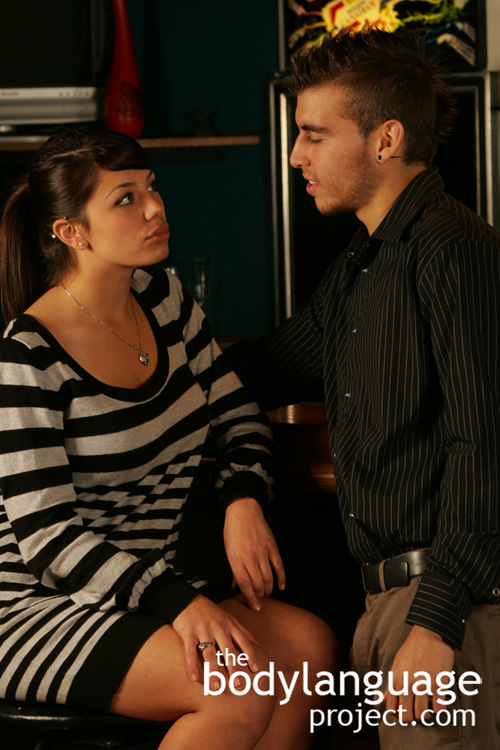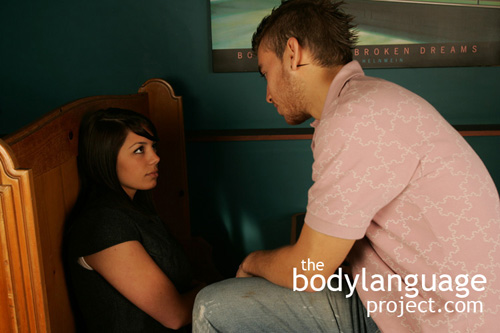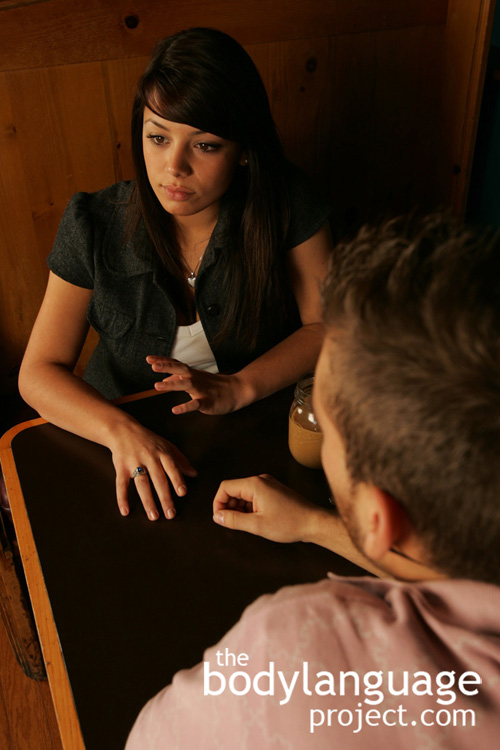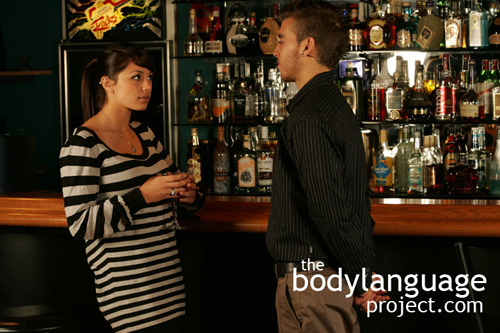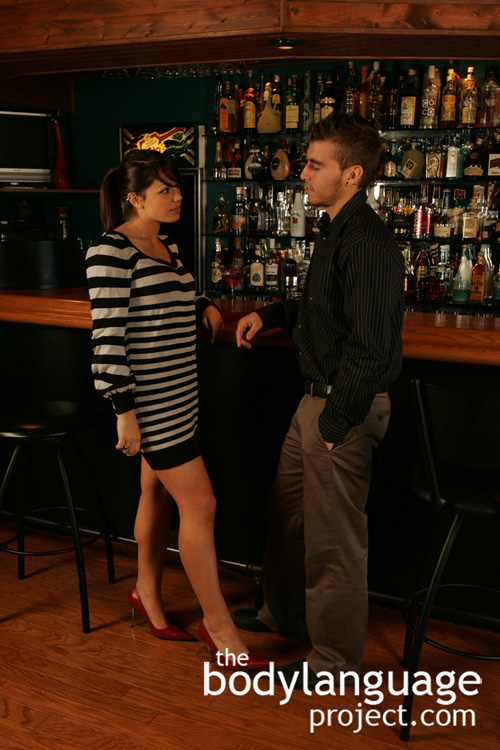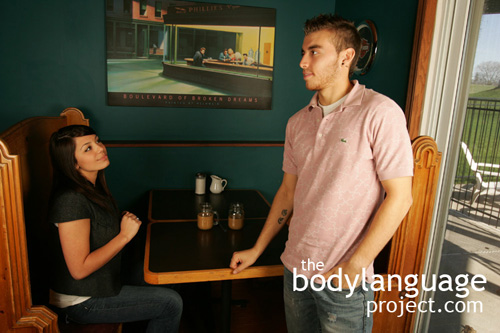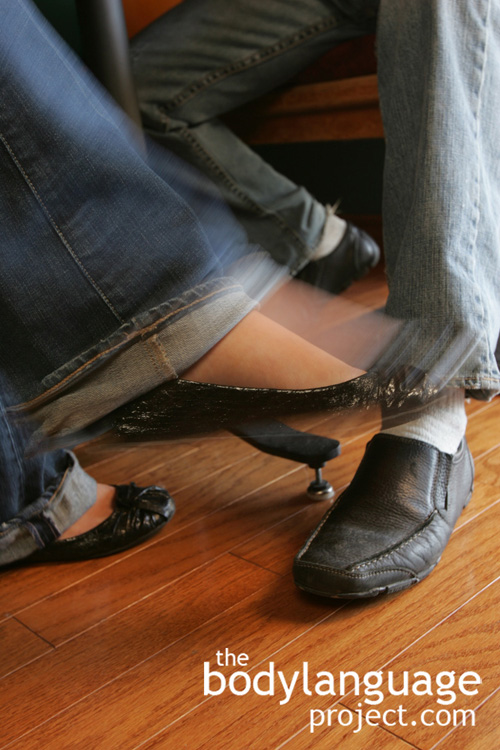Proximity plays a huge factor in dating and anything done to decrease space between tow people is a good signal of attraction. Sometimes, closeness is real, for example a woman might get up and physically move closer to a man, she might move a chair next to him or she might opportunistically take up a position close-by on a sofa. All cues that are important give alternative options to sit. Sometimes too, proximity is figurative such as is the case when women point, or when eyes are cast.
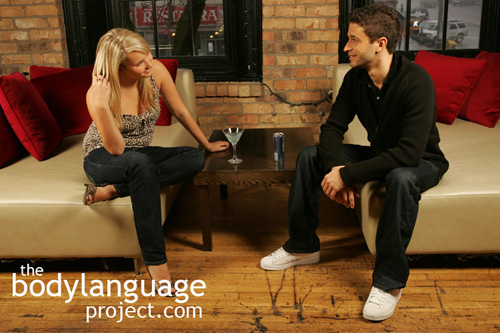
The “pointing knee” happens when a woman sites on her foot and aims her knee toward the man of interest.
Pointing, like eyeing, are ways to bring people close together without actually moving. Both are reliable indicators of where we’d rather be, or who we are thinking about. We can point with our eyes, our toes or feet, or our knees. The pointing knee happens when a woman sites on her foot and aims her knee toward the man of interest. This is sometimes also a signal of being relaxed and informal which extends the meaning of the pointing knee. Escape is difficult in this position so when done by a woman it means that she is comfortable around whomever she is with at the time. Dangling a shoe is another informal signal of comfort for the same reason. The pointing knee also shows fleeting glimpses to the inner thigh which can be arousing to men. Leaning in or toward, standing next to someone or even isolating oneself from friends all shows interest when done by women.
Touching is another great signal of attraction even if it happens ‘accidentally’. Women will make a point to brush up against men of interest and as we have seen may groom them if they wish to send a strong message. Have you ever wondered if he or she really likes you? Try accidentally brushing a knee or leg up against someone under the table. If they pull away or turn immediately than it’s due to disinterest, but if it’s embraced and “footsies” ensue then it’s an excellent signal of interest. To make sure the signal is anchored try casting occasional flirty eye contact. This is a signal that can be used by either men or women. When outside of a dating context, the same pulling away will be found so this isn’t limited to courtship. People that hate each other like to maintain as much space as possible and even accidental touching is unwelcome.
Leaving a tie un-straightened can give women an excuse to touch and is a great way to measure interest by men. To send a much more subtle signal of touching an object might take the place of a person. Such is the case with caress the stem of a wine glass, ring, watch or car keys. The back of the hand, the neck, the shoulders, or side of the face can also show interest. Self touching is a way to prepare the body for touching by someone else and also indicates what type of touching women wish to receive. Self-touching is a ‘fix’ that is used to alleviate the symptoms of the desire to be touched, and indicates where a women’s mind is thinking.

